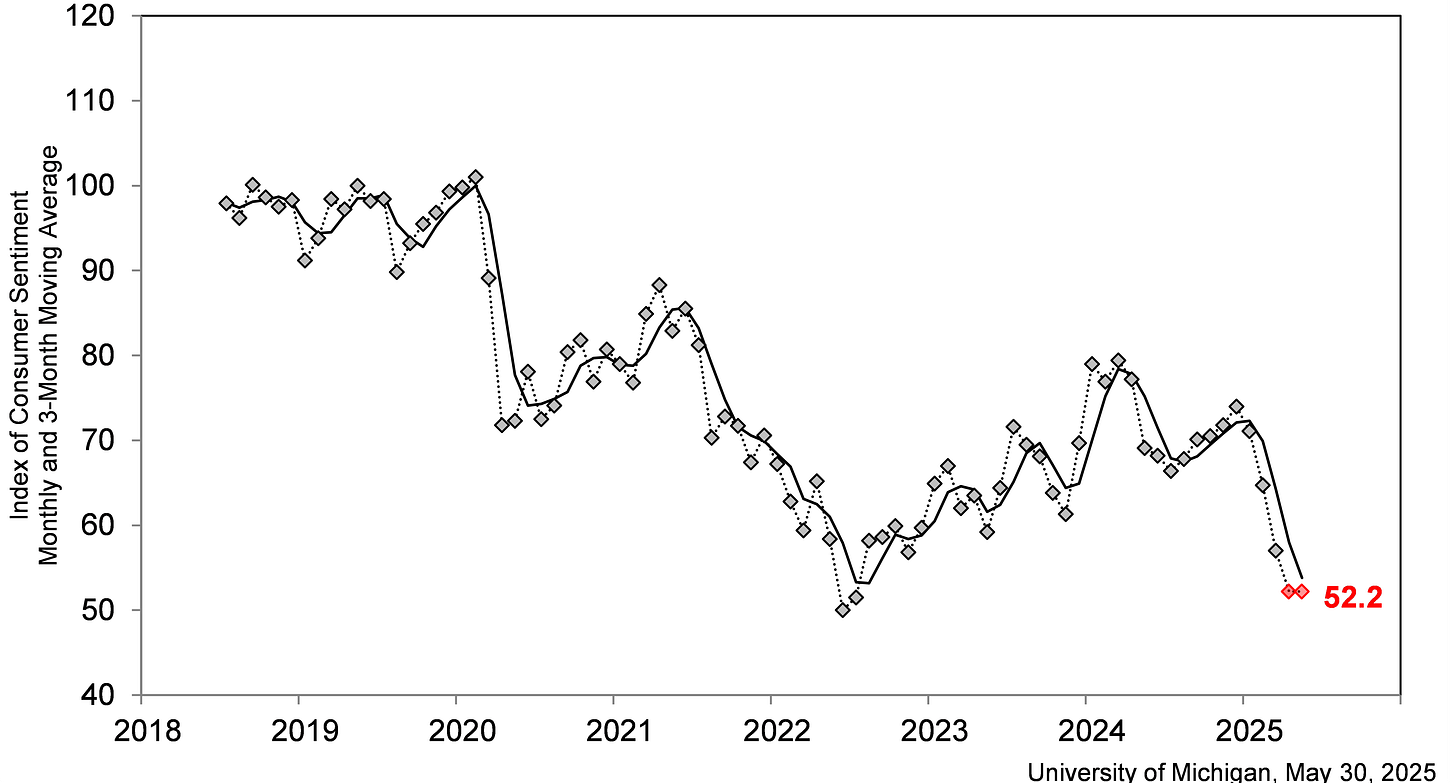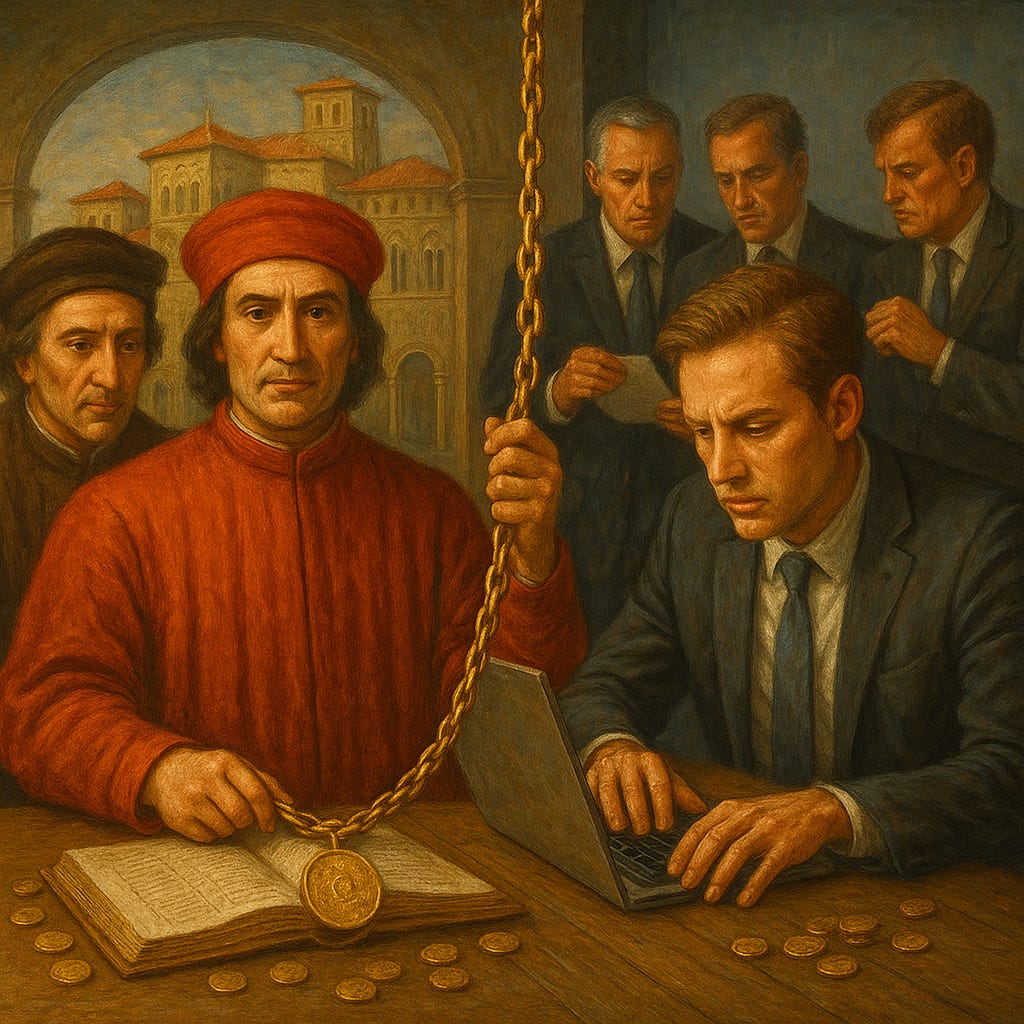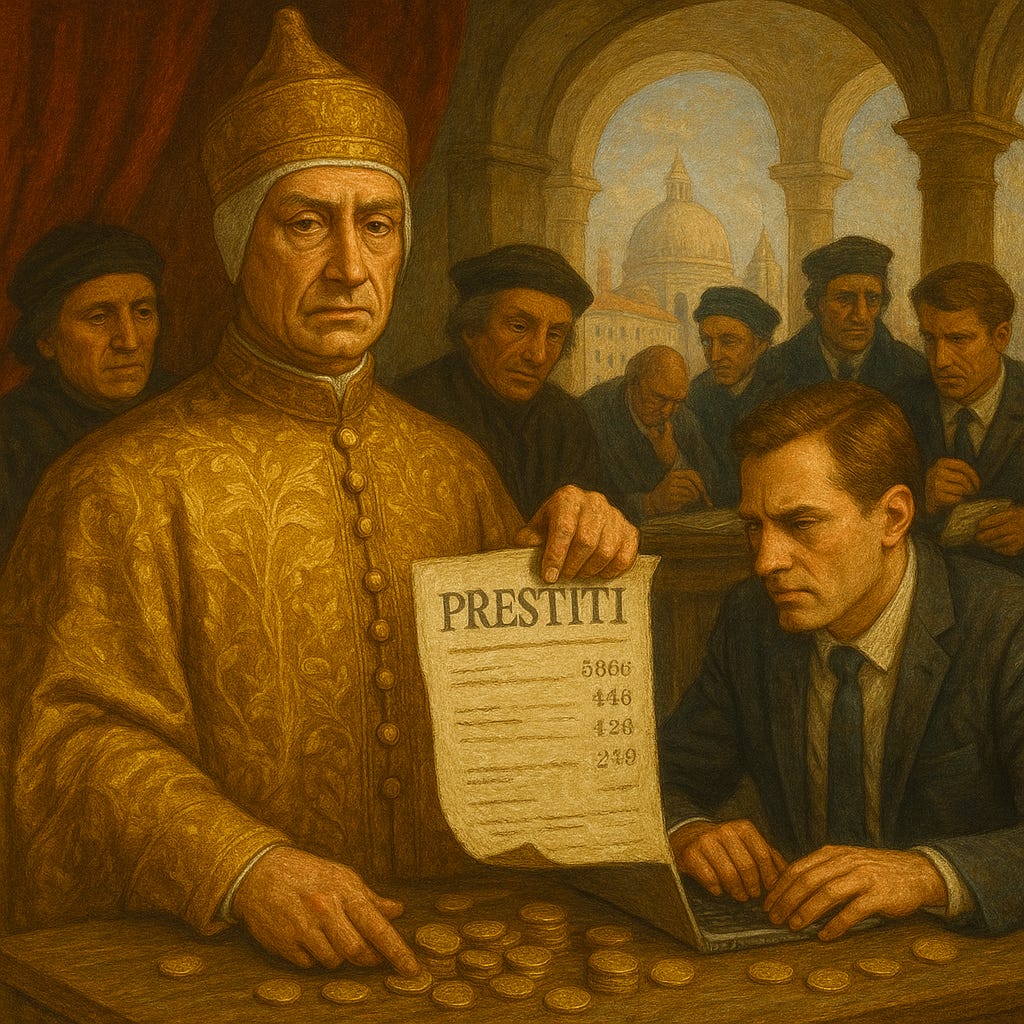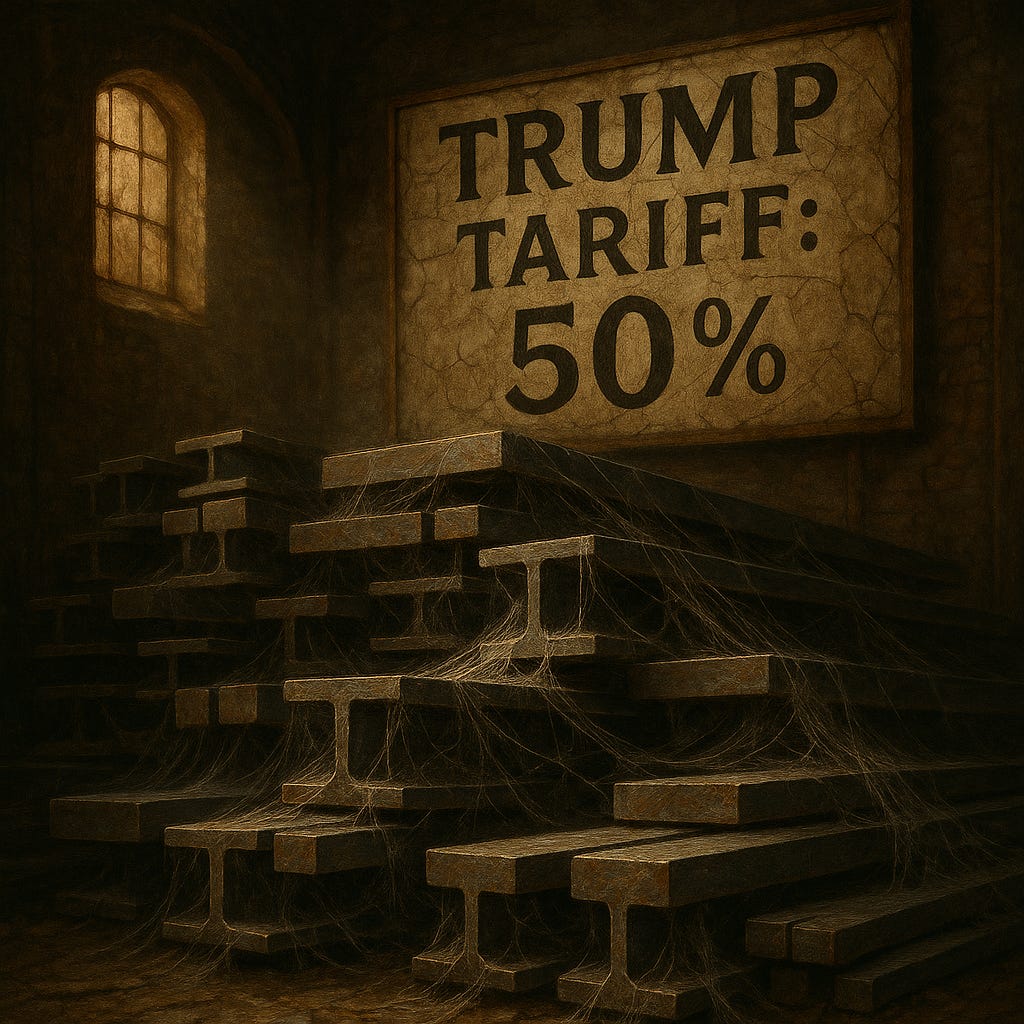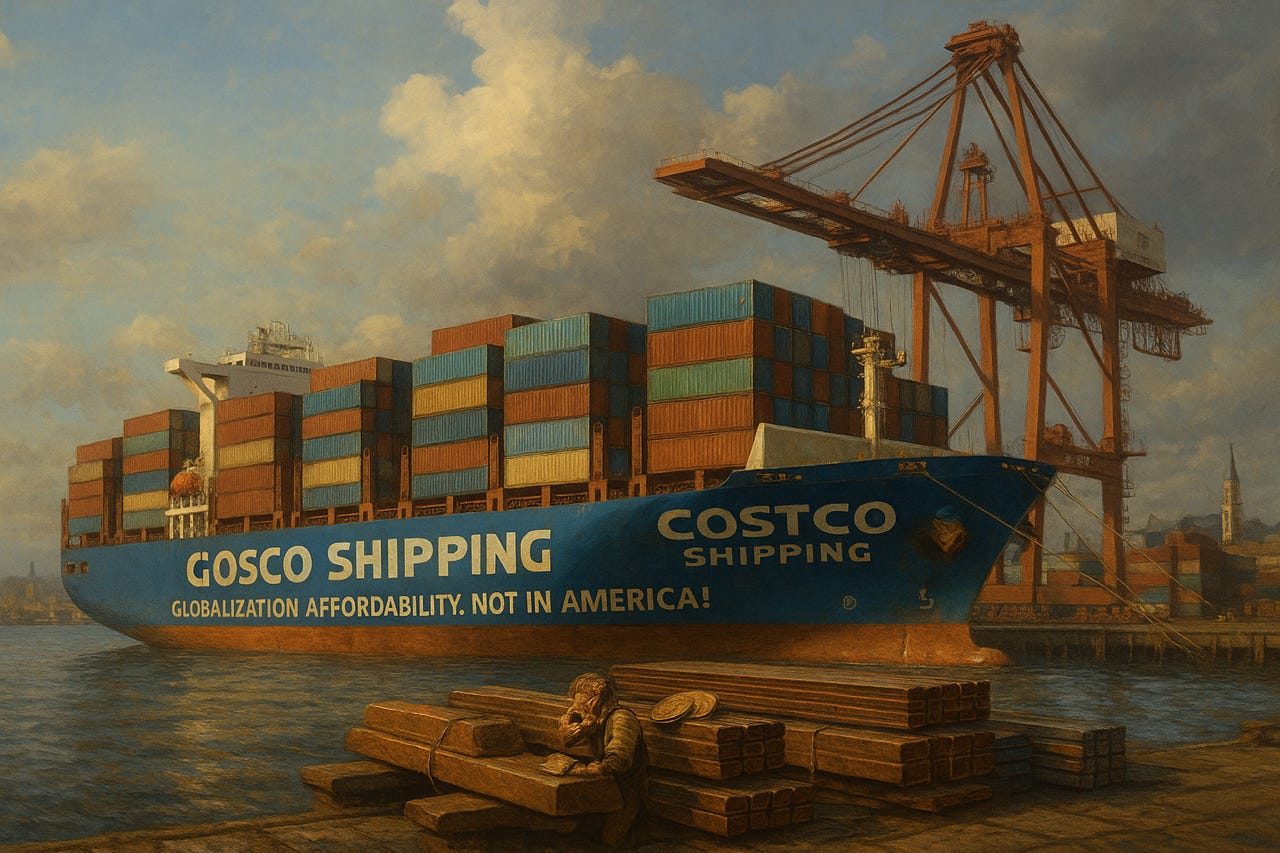A World on the Brink: From CEO Pessimism to The Fall of Confidence
Cultural Updates Now Available Brought to you by HumanistFreeAudio
Boardrooms Are Crumbling Under Donald’s Decaying Decrees—Is America Ready for a New Dawn?
A Crisis In Confidence: Contradictions, Calamity, Call Backs
The spring of 2025 has become a gauntlet of American ambition—a reckoning that no CEO, no central banker, no ivory tower academic can dismiss. The Conference Board’s Measure of CEO Confidence, a canary in the corporate coal mine that hasn’t already died, is pronounced dead. The confidence level has plunged to 34—the lowest in half a century since the oil shocks of the 1970s. A 26-point freefall in just one quarter, punctuated by boardrooms turning from battlefields of innovation into bunkers of risk aversion. Eight out of ten CEOs now predict a recession in the next 12 to 18 months. Their voices crackle with uncertainty. Their hands waver over investment plans once forged in fire and ambition.
The data speaks for itself. Signaling a retreat in business investment, non-defense capital goods orders excluding aircraft—a key indicator of business investment—fell by 1.3% in April 2025: a stinging retreat from the fervor of prior quarters.
The Leading Economic Index, that secular scripture of growth, logged its fifth consecutive monthly decline—this time by a full percentage point—blaring a warning siren for future economic contraction. The financial pages are littered with confessions of caution: bankers refusing new loans, investment committees scrapping expansion plans, consumer sentiment surveys dipping into the netherworld.

And the tremors spread far beyond American shores. Moody’s clipped the U.S. credit rating from Aaa to Aa1, a public rebuke to fiscal profligacy. Foreign investors took the hint, pulling back capital like a Venetian merchant scuttling home as the Levant slipped into crisis. On trading floors from Dubai to Düsseldorf, talk of American exceptionalism now carries an asterisk: exceptional in:, well, squandering stability.
Listen to the cacophony of critical headlines themselves, their words sharp as Venetian glass the merchants above carried:
“Scott Bessent says U.S.-China trade negotiations are 'stalled.' Just weeks after a dramatic tariff rollback, negotiations are at a standstill” Quartz May 2025
“McDonald’s store traffic falls unexpectedly as diners grow uneasy about economy” Associated Press May 2025
“Americans aren’t feeling encouraged by Trump’s trade negotiations” CNN May 30, 2025
“Campbell’s Co. says sales rise as more Americans cook meals at home: the highest level of meals cooked at home since early 2020” Associated Press June2025
“A spiral of rising interest rates leading to worsening credit risk, leading to less demand for the debt, leading to higher interest rates is a classic debt ‘death spiral’, Ray Dalio, billionaire investor, June 2025
“I do study the economic implications, which appear to be increasing the likelihood of both higher inflation and labor-market cooling,” Federal Reserve Governor and policymaker, Lisa Cook, said in a speech to the Council on Foreign Relations in New York June 2025
The Call Backs: Merchants In Melancholy

The past, always whispering to those who would listen, has seen this all before. In Florence of the 1340s, the Bardi and Peruzzi banks—once sovereigns of trade—collapsed under the weight of 100 Years War royal debts. With the flick of a quill, Edward III defaulted, and Florence’s merchant princes were left gasping. Defaulting? On a whim? Sound familiar?
Confidence shattered like a dropped chalice. Investment halted. Florentine workshops that once glowed with gold leaf and genius went dark, their silence a hymn for hollowed out trust.
Bicci ‘Da Bank & Cosimo of The Coins
It took the cunning of Giovanni di Bicci and his son, Cosimo de’ Medici, who would rise decades later, to coax Florence back into the game. They understood that money is the alchemy of belief—belief in the city, belief in the future. And florins—in our modern world dollars, euros, and yuan—aren’t worth what they’re forged from…or printed on. They stitched together networks of trade and patronage through reputation management and verified systems, weaving trust where there had been none.
Giovanni didn’t just open a bank in 1397: he erected a fortress of trust, welding: double-entry bookkeeping into the soul of commerce. He turned letters of credit from merchant scribbles into ironclad promises, letting Florentine traders sail seas and cross continents without fear. A free flow of people, ideas, and products? Inconceivable!
Cosimo took his father’s sturdy foundation and raised it to an empire. He planted branches in Rome, Venice, Bruges, Lyons, Constantinople, London each one a beacon of Florentine ambition. The formula: a partnership model where branch managers had their own gold in the game—no royal decrees, no borrowed bravado, just the sweat of their brow and the weight of their coin. Partnerships, remember those?
And he was no cold-hearted or small-minded banker. Cosimo poured florins into the bones of the city: walls, roads, aqueducts, academies, libraries like San Marco, vaults of knowledge that turned Florence into the forge of genius.
Both Medicis showed that faith—when forged of cunning and commitment—is the ultimate currency of power.
Bloodshed Is Too Much Of A Banking Risk
Venice, too, faced its abyss in 1509. The War of the League of Cambrai saw the Serenissima’s mainland empire wrenched away overnight, trade routes threatened by cannon and conspiracy. Venetian merchants, once so bold, turned inward, hoarding ducats and murmuring of lost glory. But the Doges did not flinch forever. They reoriented trade eastward, outwitted papal decrees, and turned adversity into opportunity.
With her mainland sinews torn and trade routes bled under the iron of foreign guns, merchants roared again, once bold as lions, now again deciding to defy fate. Financing Padua from the ash of defeat, in July 1509, Andrea Gritti led a counterstrike that was part cavalry charge, part clarion call—snatching Padua back from the League’s iron grip. The city a testament to Venetian resolve.
Diplomacy then became their shield. Seeing the threat of French supremacy, Pope Julius II turned his coat—forming the Holy League with Venice, a fresh alliance forged in the fires of necessity. Who needs alliances?
Venetian captains, undaunted by cannon smoke, steered east to forge fresh routes—binding the Republic’s future to the Levant’s promise. And as ducats grew scarce, Venice invented trust itself. The ‘prestiti’—government bonds—became the city’s lifeblood, turning citizen wealth into civic salvation. Don’t even look at the U.S. bond market…
So, Venice, battered yet unbroken, reinvigorated the rules of maritime might.
When We Are Comparing Ottoman Economic Policy Favorably Vs. The U.S….
Even the Ottomans, in the 16th-century, bounced back from the Long War (1521-1791) with The Habsburgs, which drained their treasury. The caravanserais fell quiet. Aleppo’s khans, once bustling, shuttered their doors. In Constantinople’s covered bazaars, the gossip was of imminent doom. Such pessimism is a contagion as deadly as plague—of which the empire had many—and it took decades for the Ottoman merchant class to dare again.
The Sublime Porte summoned reforms as swift as a Janissary’s blade. Governors were called to heel, power recentralized in Constantinople’s opulent halls—an empire’s iron grip tightening to stop the bleeding.
Trade, too, would not be left to the winds of war. The Ottomans turned their gaze outward, striking new accords with Europe’s merchant princes realizing the reality of insularity was only an anchor around its economic neck. *do we really even need to explain here?*
In Aleppo, English, French, and Dutch envoys unfurled their banners—red, white, and blue mingling with the green of Islam. Bazaars awoke once more to the hum of haggling, and Ottoman merchants—cautious—learned that fortune favors the daring.

Thus the empire, tested by iron and intrigue, refused to fade. Through military resolve, administrative realignment, and the careful courting of commerce, the Ottomans went from decline to defiance—reminding all that pessimism, unlike plague, can be vanquished by will.
American Decline In The World’s Eye
In 2025, the signs of American decline are no longer the fever dreams of foreign commentators—they are front-page news. German and Japanese pension funds, once stalwart buyers of Treasuries, have trimmed their sails. Singaporean sovereign wealth funds are diversifying, shifting capital to what they call “resilient zones” in Southeast Asia. It is a reversal of fortune that stings: the dollar still reigns, but its throne is no longer unassailable.
And the bleeding only continues with self-inflicted wounds: “Trump promises to hike steel and aluminum tariffs to 50% starting June 4th.”
Steel soared rose 15%, choking manufacturers. Midwestern exporters report lost contracts to European and Asian rivals. Supply chains, already frayed by post-pandemic disruptions, now hang by a thread.
Ron Vachris, CEO of Costco: “We’re rerouting tariff-exposed goods to non-U.S. markets… to mitigate overall cost increases.”
Vachris discussed strategies to shield consumers from price hikes driven by rising tariffs, including redirecting goods to markets like Canada and Japan.
The Conference Board’s CEO Confidence Index is the 21st-century equivalent of the merchant ledgers of Florence—an early warning system of sentiment, a map of ambition’s ebb and flow. In 2025, it reads like a medieval plague diary: fear, uncertainty, retrenchment.
Rebuilding The Bridges, And Not Just Infrastructure
But history is not merely a litany of ruin—it is a testament to resilience. Cosimo de’ Medici did not rebuild Florence by heaping scorn on the past. He built forward. He invested in human capital—in painters, philosophers, goldsmiths. He understood that beauty and commerce are kin. In the battered Florentine workshops, he saw not just gilded panels but the seeds of a civic rebirth.
Venice’s Doges did not simply wait for the tides to turn. They launched galleys to Alexandria, cut deals in the Levant, and pivoted their economy from conquest to cooperation by issuing the first of its kind citizen bond holding. The lesson is plain: when old orders crack, new alliances must be forged—trade routes redrawn, investment reimagined, confidence rekindled.
THE CALL FOR COSIMO IN OUR TIME
Who among us will be the Cosimo of the 21st century? Who will see in the rubble of Q2 earnings calls not the final chapter but the prologue to a new Renaissance? It will take a leader who can balance the ledger of ambition with the ledger of trust—who sees that economic growth is not a numbers game but a human drama.
We need leaders who invest in people, not just in profit margins. Who understand that infrastructure is not mere concrete and steel—it is the stage upon which the drama of civilization unfolds. That education is not a budget line—it is the wellspring of creativity and competitive fire.
We need policy architects who see beyond the quarter’s end—who imagine a nation of builders and dreamers, not just consumers and cynics.
The American economy must become again what it once was: a beacon to the world. It must reclaim the mantle of the merchant republic—where trade was not a zero-sum game but a river of mutual prosperity. Where alliances were not mere convenience but covenants of cooperation.
This will require bold action:
Tariff Reduction: Slashing the barriers that choke trade and trust, replacing blunt instruments with targeted, strategic engagement.
Infrastructure Rebirth: Investing in ports, rail, digital corridors—renewing the lifelines of commerce, as the Medici built bridges over Florence’s Arno.
A Culture of Human Capital: Funding education, fostering apprenticeship, reviving the guild spirit—where skill is both honor and currency.
A Constituent Assembly: Remaking the U.S. Constitution so that guardrails aren’t just guidelines, they are guaranteed by delineated prescriptive methods.
Global Reengagement: Reclaiming America’s role as convener, not combatant—restoring faith in a Pax Mercatoria for the 21st century.
In 2025, we stand again at the edge of darkness—but also at the threshold of light. The Conference Board’s somber data is not a death sentence—it is a summons. A call to arms for those who still believe that the best of what we are can outshine the worst.
Look back to Florence, to Venice, to the khans of Aleppo. Remember that every age of doubt was once redeemed by an age of daring. That decline is not destiny. That every city of merchants has within it the soul of a republic—if only its leaders have the courage to lead.
Let this be a new dawn.
Keep our content coming and free from the firehose of fascism. Please consider buying a coffee for some of our scribes.






